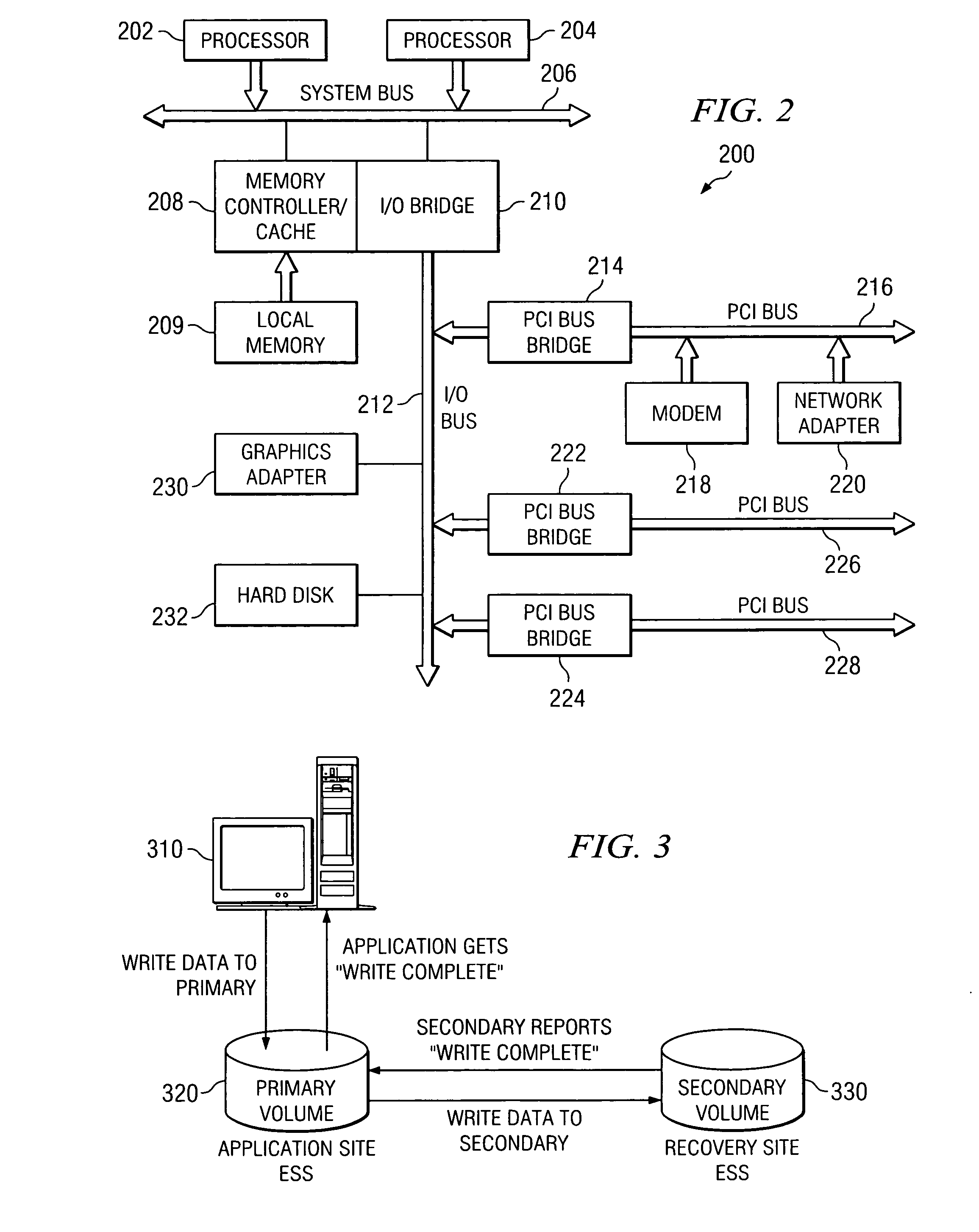System and method for application fault tolerance and recovery using topologically remotely located computing devices
a computing device and topologically remote technology, applied in computing, error detection/correction, instruments, etc., can solve the problems of clustered server/storage environment that does not provide any application independent mechanism, server clusters or storage system clusters are topologically and geographically limited, and the last log update since the last update was shipped to the standby server will be los
- Summary
- Abstract
- Description
- Claims
- Application Information
AI Technical Summary
Benefits of technology
Problems solved by technology
Method used
Image
Examples
Embodiment Construction
[0050] The illustrative embodiments set forth herein provide mechanisms for maintaining a shadow application instance that is running in an active standby computing device that is topologically, and often times geographically, remotely located, i.e. not within the same storage area network or cluster, from a primary computing device running a primary application instance of the same application. As such, the mechanisms of the illustrative embodiments are preferably implemented in a distributed data processing environment.
[0051] In the following description, the mechanisms of the illustrative embodiments will be described in terms of a distributed data processing environment in which there is a plurality of data processing systems provided that may communicate with one another via one or more networks and communication links. FIGS. 1 and 2 provide examples of data processing environments in which aspects of the illustrative embodiments may be implemented. The depicted data processin...
PUM
 Login to View More
Login to View More Abstract
Description
Claims
Application Information
 Login to View More
Login to View More - R&D
- Intellectual Property
- Life Sciences
- Materials
- Tech Scout
- Unparalleled Data Quality
- Higher Quality Content
- 60% Fewer Hallucinations
Browse by: Latest US Patents, China's latest patents, Technical Efficacy Thesaurus, Application Domain, Technology Topic, Popular Technical Reports.
© 2025 PatSnap. All rights reserved.Legal|Privacy policy|Modern Slavery Act Transparency Statement|Sitemap|About US| Contact US: help@patsnap.com



